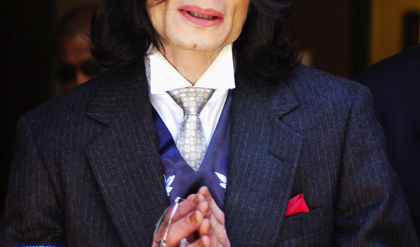The REAL Reason IP MAN Stopped Teaching BRUCE LEE | HO

The REAL Reason IP MAN Stopped Teaching BRUCE LEE
Bruce Lee’s journey into martial arts is one shrouded in myth and legend. Most people are familiar with the cinematic depictions of his early years, often seeing him as a young prodigy who started his Kung Fu journey under the tutelage of the legendary Yip Man (Ip Man). Films like Dragon: The Bruce Lee Story paint an image of a secluded temple where Bruce trained intensely as Yip Man’s only disciple. However, the truth of Bruce Lee’s training is far more nuanced and complicated, and his relationship with Yip Man wasn’t as straightforward as many think. The real reasons behind Yip Man stopping Bruce’s training are rooted in cultural tensions, rivalries, and Bruce’s evolving martial arts philosophy.
Bruce Lee’s Early Years and His Introduction to Martial Arts
Before Bruce Lee became a martial arts legend, he was already a well-known child actor. Born in 1940 in San Francisco and raised in Hong Kong, Bruce’s life in the film industry started almost immediately. By the time he was 18, he had already amassed over 20 film credits. Despite his fame, his early years were marked by a rough childhood filled with poverty, violence, and gang culture. Growing up in the streets of Hong Kong, Bruce became involved in a local gang called the “Junction Street 8 Tigers,” a group formed for self-defense against the dangerous Triads that controlled the streets of the city.
Though Bruce was an athletic young boy and often used street fighting as a way to defend himself, he soon realized that raw aggression alone was not enough to survive in a world of ever-escalating violence. He needed something more structured, something that could refine his fighting skills and give him control over both his body and mind. This realization led him to Wing Chun Kung Fu.
Bruce Lee’s Initial Martial Arts Exposure
Bruce’s first exposure to martial arts came through his father, who practiced Tai Chi. However, Tai Chi’s slow and flowing movements didn’t offer Bruce the combat skills he needed, and he quickly realized that it wasn’t suited for the street fighting scenarios that he was used to. Later, through his experience on film sets, Bruce came into contact with the martial art of Hung Gar, known for its powerful stances and strikes. Although Hung Gar impressed Bruce with its power, he quickly found that it wasn’t effective enough in street fights where speed and efficiency were paramount.

Bruce’s first real test came when he found himself in a fight with a schoolmate, who happened to be the son of a powerful Triad member. After a violent altercation in which Bruce injured the Triad boss’s son, rumors spread that the Triads were after him. This dangerous situation pushed Bruce to consider training in a more structured martial art to defend himself.
Bruce Lee’s Encounter with Wing Chun and Yip Man
It was during this time that Bruce became acquainted with William Chung, a classmate and Wing Chun practitioner. William challenged Bruce to a fight, and despite Bruce’s street fighting experience and athleticism, he was swiftly defeated by Chung, who demonstrated the effectiveness of Wing Chun techniques. This humbling loss ignited a desire in Bruce to learn Wing Chun, and he began to study under Yip Man, the grandmaster of the style.
However, Bruce’s entrance into the world of Wing Chun was not as smooth as some would believe. According to some sources, Bruce was initially skeptical of the Wing Chun system, considering its stances too rigid for the street fighting he was accustomed to. Bruce believed that the parallel positioning of the legs in Wing Chun left openings for kicks, a perceived flaw in the style. During his first encounter with a senior student of Yip Man’s school, Chuan Tin, Bruce’s skepticism was quickly dispelled. Chuan invited Bruce to test the theory by kicking him. When Bruce did, Chuan blocked the kick effortlessly and struck Bruce’s leg, sending him crashing to the ground. In that moment, Bruce realized the power of Wing Chun’s structure and precision.
Rising Tensions within the Wing Chun School
Despite this early setback, Bruce’s skills in Wing Chun began to improve rapidly. However, as he advanced, tension started to grow within the school. Yip Man’s Wing Chun school had traditionally been a gathering place for older students who were mostly working-class men seeking to learn for self-defense and discipline. The arrival of younger, more competitive students like Bruce Lee changed the dynamic within the school. Bruce and his peers were not interested in meditation or spiritual refinement. They wanted to dominate and prove their fighting abilities on the streets.

This shift in focus didn’t sit well with the older students. They viewed Bruce and his friends as disruptive and disrespectful to the traditional values of the school. Bruce’s relentless focus on practical, street-oriented fighting didn’t align with the values of the older students who were there to learn for self-discipline. Moreover, Bruce’s demeanor, often seen as arrogant, didn’t help his standing among the other students. He carried himself with an air of superiority, which didn’t resonate well with some of the senior members of the school, including the top fighter of the time, Wong Shun Leung.
Wong, who was more traditional and disciplined, reportedly took issue with Bruce’s behavior, describing him as disrespectful and dismissive of the teachings. In fact, Wong once told William Chung that he didn’t welcome Bruce at the school. Despite the tension, Bruce’s natural talent for martial arts and his drive for improvement earned him a place in the school, and Yip Man took notice of his potential.
The Final Break with Yip Man
Over time, Bruce’s martial arts journey became less about learning a traditional system and more about his own evolution as a martial artist. As Bruce began to master Wing Chun, he started to question its limitations and began developing his own martial art philosophy. His desire for innovation and his willingness to challenge traditional forms set him on a path that would eventually lead to the creation of Jeet Kune Do, a martial art that combined elements of various fighting styles while focusing on practicality and efficiency.
Bruce’s shift toward a more individualistic approach created further friction between him and his traditional teachers. Yip Man, although supportive of Bruce’s abilities, could not endorse his desire to break away from the traditional Wing Chun system. The relationship between teacher and student began to strain as Bruce’s philosophy grew further apart from that of the traditional Wing Chun teachings.

Ultimately, Yip Man, seeing that Bruce was no longer content within the boundaries of traditional Wing Chun, stopped actively teaching him. This decision was not due to any personal animosity but rather a recognition that Bruce’s path was diverging from the style’s core principles. Yip Man, while a huge admirer of Bruce’s potential, could not support his desire to break free from tradition and create a new system of fighting.
The real reason Yip Man stopped teaching Bruce Lee lies in a combination of factors: cultural tensions within the school, generational differences, and Bruce’s evolving martial arts philosophy. Bruce was no longer just a student following the teachings of a grandmaster—he had become a martial artist in his own right, searching for a new way that transcended traditional forms. This journey led Bruce to ultimately break away from Wing Chun and create his own martial art, Jeet Kune Do, which emphasized efficiency, directness, and practicality over tradition.
While their relationship was complex, Bruce’s time with Yip Man was undeniably formative, and it laid the foundation for Bruce’s future martial arts innovations. However, the path that Bruce chose—one focused on breaking the boundaries of tradition—was something that even the legendary Yip Man could not fully endorse. And in this way, Bruce Lee’s journey into martial arts became not just a continuation of his teacher’s legacy, but a reinvention of martial arts itself.





